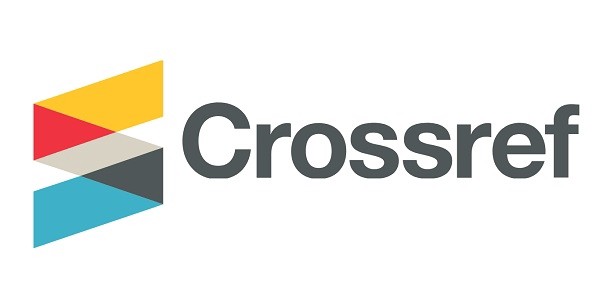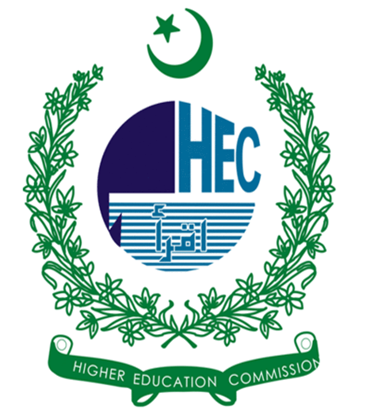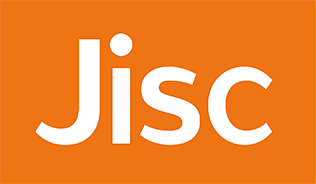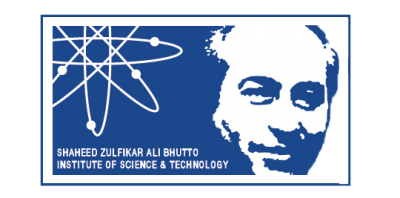New Focus For Industrialization 4.0: Economic Growth Through Industrial Energy Management
DOI:
https://doi.org/10.31384/jisrmsse/2023.21.3.7Keywords:
energy management, energy efficiency, industrialization, sustainable economic growth, Pakistan, internet of thingsAbstract
The purpose of this article is to understand and elaborate on the impact of energy management through the use of solar energy
systems in the industrial sector over the economic growth of developing countries. This study is based on Pakistan where the concept is in the infancy stage. Therefore, the significance of the study has many folds as the study will not only reflect the contemporary use of solar panels in the industrial sector but also reflect vividly upon the implications of the concept regarding the eastern and developing markets. The study collected data from employees of the energy sector to test the claim with a nonprobability sampling technique and analysis has been made through incorporating SMART-PLS. The findings of the study reflect that there is a definite association between the use of solar panels in the production sector on energy efficiency as well as the sustainable economic growth of the country. Hence the study is also beneficial for fostering research work as well as to optimize the policy formulation for the use of solar energy systems in the production sector of developing countries of the world.
Downloads
References
Abbas, A., Waseem, M., & Yang, M. (2020). An ensemble approach for assessment of energy efficiency of agriculture system in Pakistan|. Energy Efficiency, 13, 683–696. DOI: https://doi.org/10.1007/s12053-020-09845-9
Abdullah, Z. D., Shah, T., Jebran, K., Ali, S., Ali, A., & Ali, A. (2017). Acceptance and willingness to pay for solar home system: survey evidence from northern area of Pakistan. Energy Rep, 3, 54–60. DOI: https://doi.org/10.1016/j.egyr.2017.03.002
Adnan, S., Khan, A. H., Haider, S., & Mahmood, R. (2012). Solar energy potential in Pakistan. Journal of renewable and Sustainable Energy, 4(3). DOI: https://doi.org/10.1063/1.4712051
Afthanorhan, W. M. A. B. W. (2013). A comparison of partial least square structural equation modeling (PLS-SEM) and covariance based structural equation modeling (CB-SEM) for confirmatory factor analysis. International Journal of Engineering Science and Innovative Technology, 2(5), 198–205.
Andreev, P., Heart, T., Maoz, H., & Pliskin, N. (2009). Validating formative partial least squares (PLS) models: methodological review and empirical illustration. ICIS Proceedings, 193. Retrieved from https://aisel.aisnet.org/icis2009/193
Aqeel, A., & Butt, M. S. (2001). The relationship between energy consumption and economic growth in Pakistan. Asia-Pacific Development Journal, 8(2), 101–110.
Cagno, E., Moschetta, D., & Trianni, A. (2019). Only non-energy benefits from the adoption of energy efficiency measures? A novel framework. Journal of cleaner production, 212, 1319–1333. DOI: https://doi.org/10.1016/j.jclepro.2018.12.049
Cantore, N., Calì, M., & Velde, D. W. (2016). Does energy efficiency improve technological change and economic growth in developing countries. Energy Policy, 92, 279–285. DOI: https://doi.org/10.1016/j.enpol.2016.01.040
Chen, H., Shi, Y., & Zhao, X. (2022). Investment in renewable energy resources, sustainable financial inclusion and energy efficiency: A case of US economy. Resources Policy, 77, 102680. DOI: https://doi.org/10.1016/j.resourpol.2022.102680
Chien, F. (2022). The mediating role of energy efficiency on the relationship between sharing economy benefits and sustainable development goals (Case Of China). Journal of Innovation & Knowledge, 7(4), 100270. DOI: https://doi.org/10.1016/j.jik.2022.100270
De Villiers, C., Kuruppu, S., & Dissanayake, D. (2021). A (new) role for business-Promoting the United Nations’ Sustainable Development Goals through the internet-of-things and blockchain technology. Journal of business research, 131, 598–609. DOI: https://doi.org/10.1016/j.jbusres.2020.11.066
Dincer, F. (2011). The analysis on photovoltaic electricity generation status, potential and policies of the leading countries in solar energy. Renewable and sustainable energy reviews, 15(1), 713–720. DOI: https://doi.org/10.1016/j.rser.2010.09.026
Dołęga, W. (2019). Selected aspects of national economy energy efficiency. Polityka Energetyczna-Energy Policy Journal, 19–32. DOI: https://doi.org/10.33223/epj/111987
Fernando, Y., & Hor, W. L. (2017). Impacts of energy management practices on energy efficiency and carbon emissions reduction: a survey of Malaysian manufacturing firms. Resources. Conservation and Recycling, 126, 62–73. DOI: https://doi.org/10.1016/j.resconrec.2017.07.023
Gahm, C., Denz, F., Dirr, M., & Tuma, A. (2016). Energy-efficient scheduling in manufacturing companies: A review and research framework. European Journal of Operational Research, 248(3), 744–75. DOI: https://doi.org/10.1016/j.ejor.2015.07.017
Goswami, D. Y., & Kreith, F. (2007). Handbook of energy efficiency and renewable energy (1st ed.). Crc Press. DOI: https://doi.org/10.1201/9781420003482
Günzler, H. (2013). Definitions of almost periodicity. arXiv preprint arXiv:1303.2337, 2337.
Hair, J. F., Hult, G. T. M., Ringle, C. M., Sarstedt, M., & Thiele, K. O. (2017). Mirror, mirror on the wall: a comparative evaluation of composite-based structural equation modeling methods. Journal of the academy of marketing science, 45(5), 616–632. DOI: https://doi.org/10.1007/s11747-017-0517-x
Hair, J. F., & Sarstedt, M. (2019). Factors versus composites: Guidelines for choosing the right structural equation modeling method. Project Management Journal, 50(6), 619–624. DOI: https://doi.org/10.1177/8756972819882132
Irfan, M., Zhao, Z. Y., Ahmad, M., & Mukeshimana, M. C. (2019). Solar energy development in Pakistan: Barriers and policy recommendations. Sustainability, 11(4), 1206. DOI: https://doi.org/10.3390/su11041206
Jan, I., Durrani, S. F., & Khan, H. (2021). Does renewable energy efficiently spur economic growth? Evidence from Pakistan. Environment. Development and Sustainability, 23, 373–387. DOI: https://doi.org/10.1007/s10668-019-00584-1
Katyarmal, M., Walkunde, S., Sakhare, A., & Rawandale, U. S. (2018). Solar power monitoring system using IoT. Int Res J Eng Technol (IRJET), 5(3), 2395–0056.
Keith, T. Z. (2019). Multiple regression and beyond: An introduction to multiple regression and structural equation modeling. Routledge. DOI: https://doi.org/10.4324/9781315162348
Kouton, J. (2019). The asymmetric linkage between energy use and economic growth in selected African countries: Evidence from a nonlinear panel autoregressive distributed lag model. Energy Economics, 83, 475–490. DOI: https://doi.org/10.1016/j.eneco.2019.08.006
Lawrence, A., Nehler, T., Andersson, E., Karlsson, M., & Thollander, P. (2019). Drivers, barriers and success factors for energy management in the Swedish pulp and paper industry. Journal of cleaner production, 223, 67–82. DOI: https://doi.org/10.1016/j.jclepro.2019.03.143
Lee, C. C., & Chang, C. P. (2007). Energy consumption and GDP revisited: a panel analysis of developed and developing countries. Energy economics, 29(6), 1206–1223. DOI: https://doi.org/10.1016/j.eneco.2007.01.001
Lin, B., & Xu, B. (2020). How does fossil energy abundance affect China’s economic growth and CO2 emissions? Science of the Total Environment, 719, 137503. DOI: https://doi.org/10.1016/j.scitotenv.2020.137503
Lin, B., & Zhou, Y. (2022). Does energy efficiency make sense in China? Based on the perspective of economic growth quality. Science of the Total Environment, 804, 149895. DOI: https://doi.org/10.1016/j.scitotenv.2021.149895
Manjikian, M. (2013). Positivism, post-positivism, and intelligence analysis. International Journal of Intelligence and CounterIntelligence, 26(3), 563–582. DOI: https://doi.org/10.1080/08850607.2013.758002
May, G., & Kiritsis, D. (2017). Business model for energy efficiency in manufacturing. Procedia Cirp, 61, 410–415. DOI: https://doi.org/10.1016/j.procir.2016.11.140
Mekhilef, S., Saidur, R., & Safari, A. (2011). A review on solar energy use in industries. Renewable and sustainable energy reviews, 15(4), 1777–1790. DOI: https://doi.org/10.1016/j.rser.2010.12.018
Meng, Y., Yang, Y., Chung, H., Lee, P. H., & Shao, C. (2018). Enhancing sustainability and energy efficiency in smart factories: A review. Sustainability, 10(12), 4779. DOI: https://doi.org/10.3390/su10124779
Muzammil, S., Akhund, S. A., & Channa, F. (2022). An Empirical Study on Solar Performance, Cost, and Environmental Benefits of Solar Power Supply. International Journal of Circular Economy and Waste Management (IJCEWM), 2(1), 1–23. DOI: https://doi.org/10.4018/IJCEWM.302203
Ogwiji, J., & Lasisi, I. O. (2022). Internal control system and fraud prevention of quoted financial services firms in Nigeria: A Smart PLS-SEM approach. European Journal of Accounting, Auditing and Finance Research, 10(4), 1–13. DOI: https://doi.org/10.37745/ejaafr.2013/vol10no4pp.1-13
Purwania, I. B. G., Kumara, I. N. S., & Sudarma, M. (2020). Application of IoT-Based System for Monitoring Energy Consumption. International Journal of Engineering and Emerging Technology, 5(2), 81–93.
Purwanto, A., Asbari, M., Santoso, T. I., Paramarta, V., & Sunarsi, D. (2020). Social and management research quantitative analysis for medium sample: comparing of Lisrel, Tetrad, GSCA, Amos, SmartPLS, WarpPLS, and SPSS. Jurnal Ilmiah Ilmu Administrasi Publik: Jurnal Pemikiran Dan Penelitian Administrasi Publik, 9(2), 518–532. DOI: https://doi.org/10.31538/ndh.v6i2.1575
Renna, P., & Materi, S. (2021). A literature review of energy efficiency and sustainability in manufacturing systems. Applied Sciences, 11(16), 7366. DOI: https://doi.org/10.3390/app11167366
Ringle, C. M., Wende, S., & Becker, J. M. (2022). SmartPLS 4. Oststeinbek: SmartPLS GmbH. J. Appl. Struct. Equ. Model.
Sander, T., & Teh, P. L. (2014). SmartPLS for the human resources field to evaluate a model. In proceedings of New Challenges of Economic and Business Development. University of Latvia.
Saunders, M. N., Lewis, P., Thornhill, A., & Bristow, A. (2015). Understanding research philosophy and approaches to theory development. In: Saunders, Mark N. K.; Lewis, Philip and Thornhill, Adrian eds. Research Methods for Business Students. Harlow: Pearson Education, pp. 122–161.
Sekaran, U., & Bougie, R. (2016). Research methods for business: A skill building approach. john wiley & sons.
Shaari, M., Hussain, N., & Ismail, M. (2013). Relationship between energy consumption and economic growth: Empirical evidence for Malaysia. Business Systems Review, 2(1), 17–28.
Shahsavari, A., & Akbari, M. (2018). Potential of solar energy in developing countries for reducing energy-related emissions. Renewable and Sustainable Energy Reviews, 90, 275–291. DOI: https://doi.org/10.1016/j.rser.2018.03.065
Silaparasetti, V., Rao, G. V. R., & Khan, F. R. (2017). Structural equation modeling analysis using smart pls to assess the occupational health and safety (OHS) factors on workers’ behavior. Humanities & Social Science Reviews, 2395–7654. eISSN, 2395-7654.
Singkheeprapha, P., Jumani, Z. A., & Sukhabot, S. (2022). Is Islamic Brand attitudes influence Thai Muslims’ buying behavioural intentions: a quantitative analysis using smart-PLS. Journal of Islamic Marketing, 13(11), 2403–2420. DOI: https://doi.org/10.1108/JIMA-08-2020-0252
Sola, A. V., & Mota, C. M. (2020). Influencing factors on energy management in industries. Journal of Cleaner Production, 248, 119263. DOI: https://doi.org/10.1016/j.jclepro.2019.119263
Tellis, W. (1997). Application of a case study methodology. The qualitative report, 3(3), 1–19. Vijayabanu, C., & Arunkumar, S. (2018). Strengthening the team performance through personality and emotional intelligence: Smart PLS approach. Scientific Annals of Economics and Business, 65(3), 303–316. DOI: https://doi.org/10.2478/saeb-2018-0019
Žukauskas, P., Vveinhardt, J., & Andriukaitienė, R. (2018). Philosophy and paradigm of scientific research. Management culture and corporate social responsibility, 121, 139. DOI: https://doi.org/10.5772/intechopen.70628
Wong, K. K. K. (2013). Partial least squares structural equation modeling (PLS-SEM) techniques using. SmartPLS. Marketing Bulletin, 24(1), 1–32.
Zakari, A., Khan, I., Tan, D., Alvarado, R., & Dagar, V. (2022). Energy efficiency and sustainable development goals (SDGs). Energy, 239, 122365. DOI: https://doi.org/10.1016/j.energy.2021.122365
Zhang, B., Wang, Z., & Lai, K. H. (2015). Mediating effect of managers’ environmental concern: Bridge between external pressures and firms’ practices of energy conservation in China. Journal of Environmental Psychology, 43, 203–215. DOI: https://doi.org/10.1016/j.jenvp.2015.07.002
Published
How to Cite
Issue
Section
License
Copyright (c) 2023 Nazia Abdul Rehman, Muhammad Faisal Sultan, Muhammad Asim

This work is licensed under a Creative Commons Attribution 4.0 International License.
Copyright: The Authors














